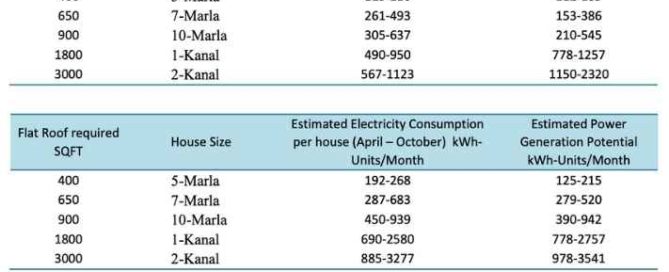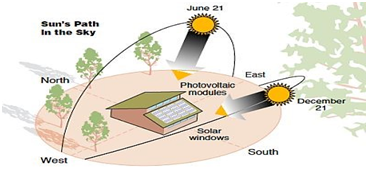FAQs
A thorough structural analysis is done by our team to determine if your roof’s load bearing capacity is sucient to take the load of the solar PV modules. Concrete roofs have no problems at all in handling the distributed load nature of solar PV modules, however T-slabs & truss based roofs have to be analyzed rst before they are used for installation.
Solar power generation and consumption analysis based on size of the house. This analysis can help determine the benefits of Net Metering. These are approximate numbers and can change.
Smart Home Solutions puts safety rst in all our installations. We use double shielded fire resistant cables, AC/DC breakers, Pakistan Cable and only the best quality consumables. The National Fire Protection Association (NFPA) has dedicated sections on Hazard Identifcation and installation best practices for solar PV systems which are used globally for installing solar PV modules to facilitate fire emergency services.
All our products are certified originals. We offer Tier 1 products and complete Inspection Reports by Accredited International Bodies like TUV Rheinland, DAkkS, CNAS, PNAC, SGS.
10KW – 2 X 1.5 TON INVERTER AC, 2 X FRIDGE, 1 X FREEZER, WATER COOLER, LIGHTS, FANS, SECURITY FENCE & CAMERAS , LED TV X 2)
15KW – 3 X 1.5 TON INVERTER AC, 2 X FRIDGE, 2 X FREEZER, 2 XWATER COOLER, LIGHTS, FANS, SECURITY FENCE & CAMERAS , LED TV X 3)
Battery Management:
Avoid deep discharge There’s a dangerous trend in renewable energy system design. Some unscrupulous salespeople are sizing systems for 80% depth of discharge (DOD) — often to rig buying criteria toward higher-cost-per-kWh batteries. Even if a particular battery technology can discharge deeper in the lab, you can’t aord to risk it. That’s because every battery needs reserve power in case of increased electrical demand or reduced energy production (for instance, during cloudy, foggy or windless days). Besides, while safe DOD levels vary, all lead-acid batteries die early when they discharge too deeply. A good solution is to size batteries for no more than 50% depth of discharge.
A few rules:
To stay below 50% DOD, size your system for two-times the true amp-hours needed, regardless of battery chemistry. If batteries are discharging below 50%, install extra batteries. Specify three to six days’ stored energy (batteries and/or backup generator) when going o-grid. Never exceed 80% DOD (50% DOD is optimal for enhanced power reserves and longevity).
Our engineers in your area can provide the best information on what it will cost to go solar based on your rooftop. However, once customers begin to explore solar options, they often find that the total up-front cost of solar is less relevant than the financing terms, Return-On-Investment, and cash ow calculation. Financial options such as solar leases and other innovative financing models can help you convert to solar for little or no money along with an efficient design that can also help bring the costs down. Factors influencing cost include:
Your available, unshaded roof space. Your current energy usage. Your local utility’s net-metering policy.
Pakistan Government is offering financing and very attractive rates to encourage people to go solar. There are no hidden costs or surprises.
- Solar panels convert energy from the sun into electricity.
- An inverter converts the electricity produced by the solar panels from Direct Current DC to Alternating Current AC for use in your home, school or business.
- The energy is used in your home, school or business.
- A bi-directional meter measures energy used and excess energy produced.
The sun is continually moving throughout the day and to get the very best from your photo-voltaic system you would need to angle your panels according to the season you are in. You can lose as much as 40% of your power generating capacity if your solar panels are not aligned according to the season as well as Latitude of your geographical location. Take your latitude and add 15 degrees for the winter, or subtract 15 degrees for the summer. For example: if your latitude is 31 degrees in Lahore, the angle you want to tilt your panels in the winter is: 31 + 15 = 46 degrees. In the summer, it would be: 31 – 15 = 16 degrees We at Smart Home Solutions will optimize your installation by aligning it accurately according to your geographical location and make sure that your system will generate optimal power at the right angles at all times and all seasons. Get in touch with us and we will show you how we can help you love the sun.
There are different quality levels of solar PV modules available in the market for example Tier 1, Tier 2 or Grade A, B, C. Specialized inspection tools are needed to identify poor quality solar PV modules that are available at much cheaper rates. We only offer Tier 1 products and complete inspection reports by Accredited International Bodies i.e. TUV Rheinland, DAkkS, CNAS, PNAC, SGS.
Solar panels do produce electricity in cloudy weather. They don’t produce as much electricity as they do on sunny days, but they have been shown to produce 25% of what they produce on a sunny day, or 10% when it’s very cloudy.
If you are building your own house it’s important to get advice in the planning stage so you can incorporate solar wiring with your regular wiring along with decisions about where to place your control room. Once the grey structure is complete, implementation with a solar company can be initiated.


